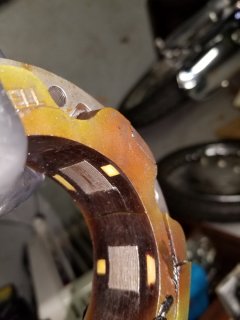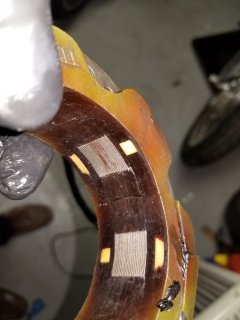The pictures you sent don't seem to show that the stator/rotor have been cooked or significantly melted or charred, I could be wrong.
I'm a firm believer that checking rotor/stator clearance is best done after establishing the initial, pre-run proper primary chain/belt tension; I like to check clearance every 90 degrees of stator while turning the crank through at least one complete revolution. I also suggest that the primary chain/belt tension be checked again after a good run when hot, especially the belt drive primaries.
If your chain/belt is excessively loose there will be period of time when accelerating when the chain/belt stores the energy, but does not transmit it. When the chain/belt does transmit the power it does so with a spike which may pull the rotor and stator into an intimate relationship. Too tight can present similar symptoms, but hard shifting is usually part of that party and the stator/rotor contact tends to near constant creating melting/charring of the stator.
Be interesting to hear the numbers if you measured the clearance before you removed the alternator components. Are the bosses where the 3 stator support studs mount allowing proper torque on the studs? Are the 3, 1/4-20 bolts that mount the inner primary cover to the engine similarly taking requisite torque? The split in your stator core, depending on depth, could easily change the geometry.
Best wishes.


